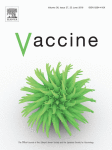Ver ítem
- xmlui.general.dspace_homeCentros Regionales y EEAsCentro Regional Santa FeEEA RafaelaArtículos científicosxmlui.ArtifactBrowser.ItemViewer.trail
- Inicio
- Centros Regionales y EEAs
- Centro Regional Santa Fe
- EEA Rafaela
- Artículos científicos
- Ver ítem
Antibodies to SARS-CoV2 induced by vaccination and infection correlate with protection against the infection
Resumen
The COVID-19 pandemic remained worldwide for almost three years, but little is known about the dynamics of
humoral immune response to the third dose over time and its protection from infection. Our aim was to assess the
humoral immune response after the third dose of the different vaccines administered to SARS-CoV-2 naive and
previously infected individuals, and its correlation with protection in an academic community.
For each person studied
[ver mas...]
The COVID-19 pandemic remained worldwide for almost three years, but little is known about the dynamics of
humoral immune response to the third dose over time and its protection from infection. Our aim was to assess the
humoral immune response after the third dose of the different vaccines administered to SARS-CoV-2 naive and
previously infected individuals, and its correlation with protection in an academic community.
For each person studied (185), three blood samples were taken between December 2021 and July 2022, one
month apart. Anti-S antibodies were quantified by ELISA, while anti-N antibody levels were determined by
ECLIA. Most of the participants had received two doses of viral vector-based, mRNA-based and virus-inactivated
vaccines.
Although anti-N antibody levels revealed that 80% of the individuals had been exposed to the virus before or
during the study, only 42% reported having been diagnosed.
When anti-S IgG levels were measured 3–5 months after the second dose of any vaccine, they were higher in
those previously infected individuals. The same results were observed for anti-N IgG levels in those who received
2 doses of the virus-inactivated vaccine.
When analyzing the dynamics of anti-S antibodies we observed that, although positive IgG antibody levels
were detected 5–6 months after the second dose administration, those observed 30–60 days after the third dose
were significantly higher and remained so for at least 8 months.
Higher levels of anti-S IgG antibodies at the first sampling were associated with a lower incidence of subse quent infection. The same association was seen in people who received the booster compared with those who
received two doses.
This study provides further evidence that anti-S IgG antibodies remained at high levels over time, and both
anti-S levels and the third dose of anti-SARS-CoV-2 vaccine correlate with protection against the infection. It also
shows that infection acts as a booster of immunization, increasing levels of both anti-N and anti-S IgG.
[Cerrar]

Autor
Flor, Noelia;
García, María Inés;
Molineri, Ana Ines;
Botasso, Oscar;
Diez, Cristina;
Veaute, Carolina;
Fuente
Vaccine 41 (48) : 7206-7211 (2023)
Fecha
2023-10
Editorial
Elsevier
ISSN
1873-2518
0264-410X
0264-410X
Formato
pdf
Tipo de documento
artículo
Palabras Claves
Derechos de acceso
Restringido
 Excepto donde se diga explicitamente, este item se publica bajo la siguiente descripción: Creative Commons Attribution-NonCommercial-ShareAlike 2.5 Unported (CC BY-NC-SA 2.5)
Excepto donde se diga explicitamente, este item se publica bajo la siguiente descripción: Creative Commons Attribution-NonCommercial-ShareAlike 2.5 Unported (CC BY-NC-SA 2.5)


